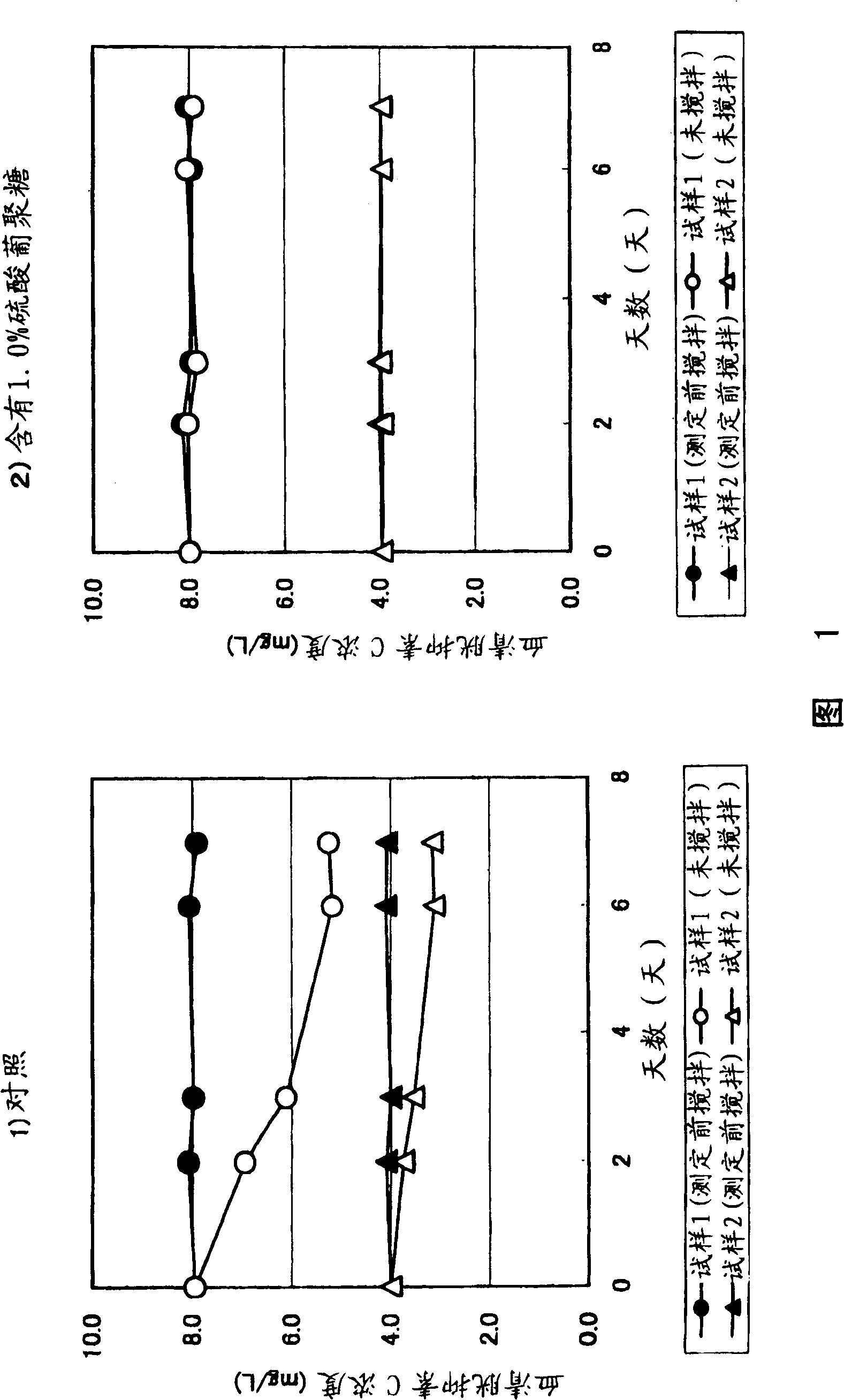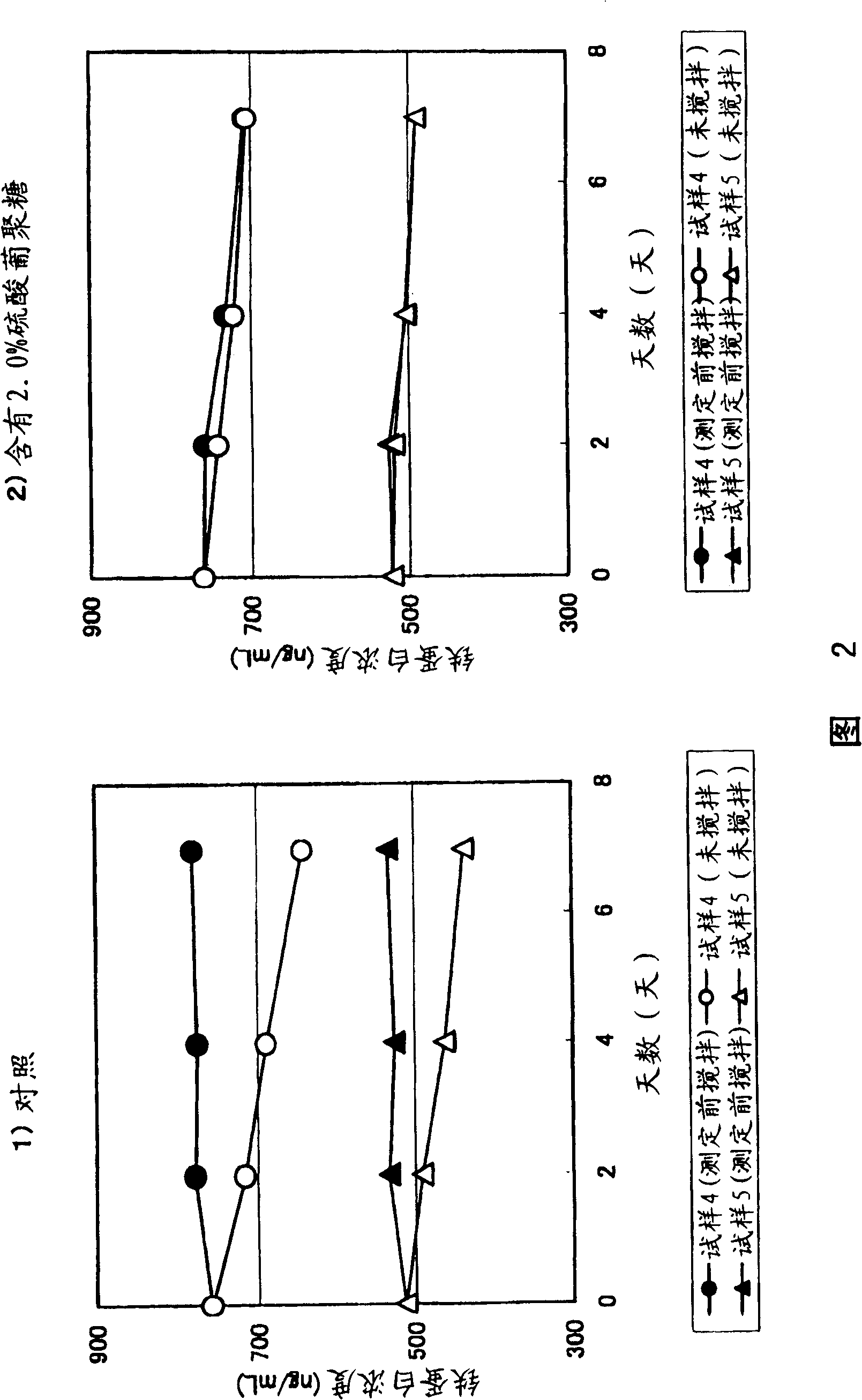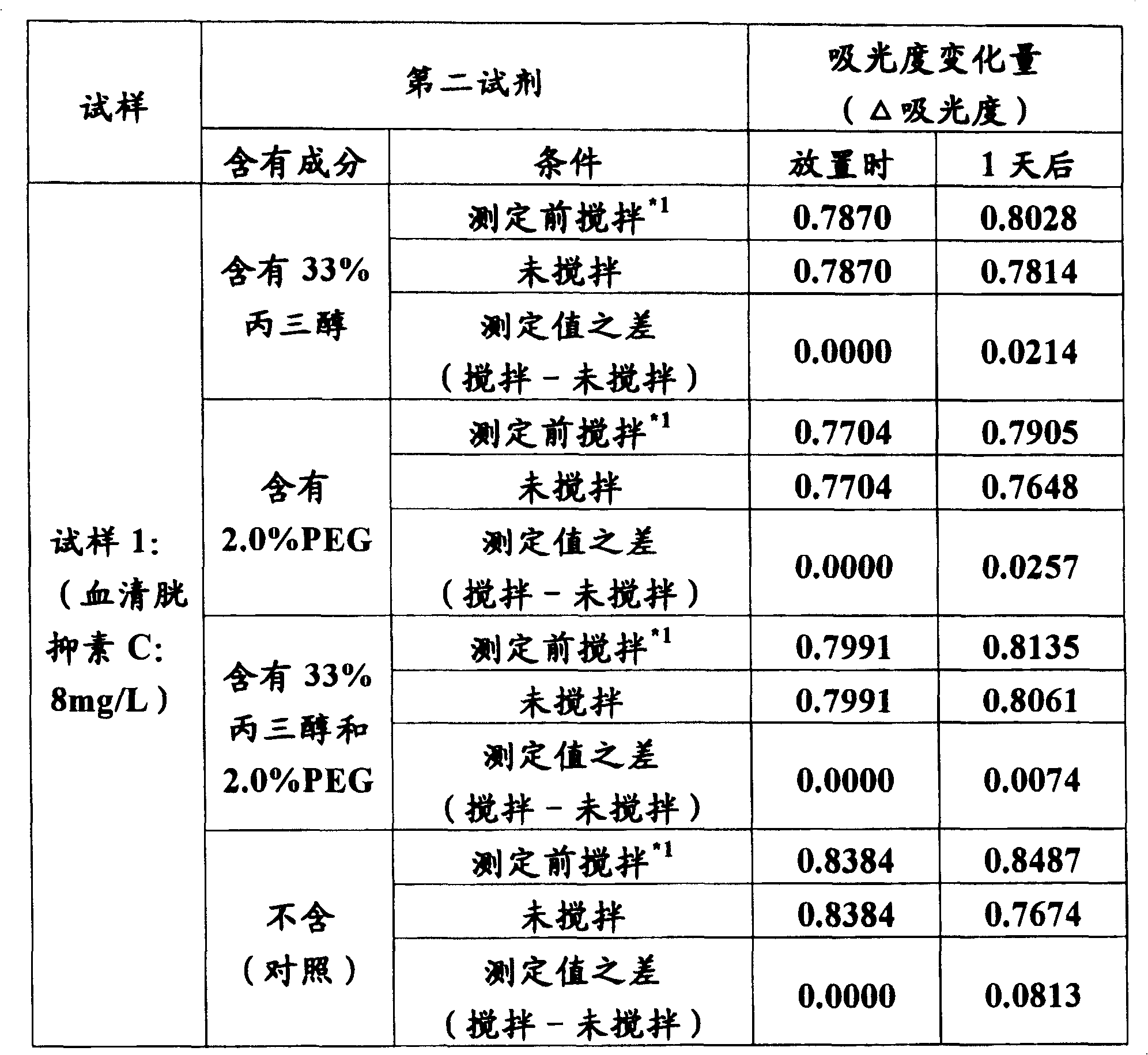Settlement inhibiting method of tiny particle for binding reactive substance and the reagent
A micro-particle and reactive technology, which is applied in. Especially in the field of immunization that utilizes antigen-antibody reaction mainly in the field of clinical examination, it can solve the problem of not inhibiting micro-particles, and achieve the effect of inhibiting sedimentation.
- Summary
- Abstract
- Description
- Claims
- Application Information
AI Technical Summary
Problems solved by technology
Method used
Image
Examples
Embodiment 1
[0060] Embodiment 1: the preparation of colloidal gold solution
[0061] Add 2mL of 10% chloroauric acid solution to 1L of 95°C distilled water while stirring, add 10mL of 2% sodium citrate solution after 1 minute, stir for another 20 minutes, and then cool to 30°C. After cooling, adjust the pH to 7.1 with 0.1% calcium carbonate.
Embodiment 2
[0062] Example 2: Preparation of the first reagent for determination of serum cystatin C
[0063] Add 1.0-2.5% to the 0.5M Bis-Tris (pH6.7) solution containing 5% sodium chloride, 0.2% EDTA, 0.2% alkylphenyl disulfonic acid sodium salt, 0.35% polyoxyethylene lauryl ether The left and right polyethylene glycols are used as reaction accelerators to prepare the first reagent for measuring serum cystatin C.
Embodiment 3
[0064] Embodiment 3: the preparation of the colloidal gold reagent (second reagent) that binds anti-serum cystatin C antibody
[0065] Anti-cystatin C antibody (Dako Japan Co., Ltd.) was diluted with 10 mM HEPES (pH 7.1) containing 0.05% sodium azide to a concentration of 50 μg / ml. 100 mL of the anti-cystatin C antibody solution Add to about 1L of the colloidal gold solution prepared in Example 1, and stir for 2 hours in a refrigerated state. Then, add 110mL of 10mM HEPES containing 5.46% mannitol, 0.5% BSA and 0.05% sodium azide .1), stirred at 37°C for 90 minutes. Then, centrifuged at 8000 rpm for 40 minutes, removed the supernatant, and then added about 1L of 5mM solution containing 3% mannitol, 0.1% BSA and 0.05% sodium azide HEPES (pH7.5) (A solution) to disperse the colloidal gold bound to the antibody. Then, centrifuge at 8000 rpm for 40 minutes, remove the supernatant, and disperse the antibody-sensitized colloidal gold in the A solution, so that the total amount reach...
PUM
 Login to View More
Login to View More Abstract
Description
Claims
Application Information
 Login to View More
Login to View More - R&D
- Intellectual Property
- Life Sciences
- Materials
- Tech Scout
- Unparalleled Data Quality
- Higher Quality Content
- 60% Fewer Hallucinations
Browse by: Latest US Patents, China's latest patents, Technical Efficacy Thesaurus, Application Domain, Technology Topic, Popular Technical Reports.
© 2025 PatSnap. All rights reserved.Legal|Privacy policy|Modern Slavery Act Transparency Statement|Sitemap|About US| Contact US: help@patsnap.com



